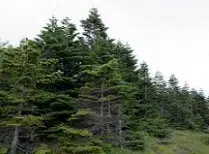In order to know the meaning of the term gymnosperms, it is first necessary to discover its etymological origin. In this case, we can state that it derives from the Latin “gymnospermus” which, in turn, derives from Greek. Specifically, it is the result of the sum of two Greek words:
-The term “gymnos”, which can be translated as “naked”.
-The noun “sperma”, which is equivalent to “seed” or “semen”.
The idea in question refers to a specific type of plant.
 Gymnosperms are plants belonging to the group of phanerogams that have their seeds exposed , since their carpels are not constituted as closed cavities that enclose the ovules. Firs and araucarias , for example, are gymnosperm plants.
Gymnosperms are plants belonging to the group of phanerogams that have their seeds exposed , since their carpels are not constituted as closed cavities that enclose the ovules. Firs and araucarias , for example, are gymnosperm plants.
It is important to stop at the given definition of gymnosperms to understand precisely what it refers to. The plant whose reproductive organs can be seen in the form of a flower is called phanerogamous . Fertilization takes place in the flower, which allows the development of the seeds with the embryos of the new specimens. Carpels, on the other hand, are transformed leaves that form a pistil (the female organ of plants).
Returning to the idea of gymnosperm, therefore, it is a plant with flowers and open carpels that leave the seeds exposed. The case of angiosperms is different, which develop fruits that contain seeds inside.
Reproduction of gymnosperms is slow. It may take a year from pollination to fertilization, and then another three years until seed maturation takes place. Most gymnosperms, on the other hand, are pollinated through the action of the wind.
Other interesting facts about gymnosperms are the following:
-With some exceptions, they are evergreen plants.
-The usual thing is that they have female and male sporophytes located on themselves, that is, they are monoecious.
-They have been dated to the so-called Carboniferous period.
-Although it is true that they can be found in any corner of the planet, the fact is no less true that, as a general rule, they exist, above all, in arctic areas and very cold climates.
-They have the particularity that they are very tall and have a very long life.
-In the same way, it is important to highlight that some of the gymnosperms are highly recognized and praised for the quality of wood they offer.
-Currently it is estimated that there are more than 1,000 species of gymnosperms and these, in turn, can be classified into 88 different genera.
-Among the best-known gymnosperms we can highlight some such as cedar, juniper, pine, cypress, sequoia, ginkgo biloba... However, we must not forget the cycadophytes or gnetophytes.
